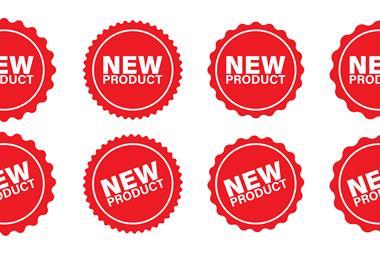Markus Schmidt says fraud can be detected more easily at the underwriting stage
'There is an opportunity to significantly tackle motor fraud by preventing it at the underwriting stage rather than detecting it at claims.
There has been a lot of press recently about 'red-flagging', the process where potential dishonest claimants are identified by demographics. Red flags are good for only a couple of things - annoying bulls and stopping fast cars. They certainly do not work as a method of identifying potential fraudsters.
This was confirmed recently by ABI senior economist Alex Roy when he said: "The perception used to be that insurance fraudsters lived in tower blocks. But our research shows that it is middle-aged, middle class and university-educated home-owners who are more inclined to commit fraud."
I could not agree more. Over the past two years we have carried out more than 6,000 vehicle inspections on new business policies in both the direct and the traditional/broker insurance business in the UK .
The insurer typically sends us a percentage of all its new policies to be inspected within a specified timeframe. During this period the car is already on risk.
The process works similar to the provision of no-claims discount, that is, the motorist is instantly covered but needs to produce evidence by a certain time.
During the pilot phase of a vehicle inspection programme most insurers send us inspection requests based on targeted risk selections as well as random selections.
We found that there is almost no difference between a random group and a selected group.
Neil Walker, motor manager at Allianz Cornhill, agreed with us. "We witnessed virtually the same level of pre-existing damage and potential fraud in both our targeted and random selections. Attempts to stereotype fraudsters seem doomed to failure," he said.
One of the main issues with motor insurance fraud is that currently the focus is on fraud detection when a claim is made and not on fraud prevention when a new policy is underwritten.
Over the past two years we found, that only 34% of all cars are a "good risk" and some 26% of all vehicles have some obvious pre-existing damage. And 2% of all cars are already sold, stolen or written-off when contacted for an inspection.
We also know that 18% of policyholders refuse or avoid a vehicle inspection. Why? What do they have to hide? The service is free for them and the vehicle inspection is carried out at a time and place convenient to them.
The fact of the matter is that policyholders who avoid the inspection are more likely to claim - their claims rate is 44% higher than the average.
The vehicle inspection programme can identify these issues and prevent them from happening.
Too much focus is put on fraud detection at the claims stage. Insurers spend millions of pounds trying to reduce fraudulent claims by way of voice stress analysis and lie detectors. But insurers also acknowledge that this is generally too late to prevent fraud.
The current practice of retrospective underwriting - endorsing the policy or modifying the premium at the claims stage - is also frowned upon.
In recent test cases the financial services ombudsman said that the insurance industry itself must take responsibility for verifying its risks before underwriting them.
It seems to me that the obvious loophole in motor insurance is the fact that cover is provided without physically seeing the risk at policy inception.
I don't, for a minute, suggest that we adopt a US-style model where vehicle inspections are mandatory before the policy is on risk.
The UK market-place has developed over the years into a system where insurance cover is instantaneous, either over the phone or via the internet.
While this system offers maximum convenience to the consumer it also mainly relies on trust. Is the address the correct address or a neighbouring address in a different postcode area which "offers" lower premiums?
Are all licence endorsements declared? Is the vehicle standard specification or are there undeclared (and expensive to repair) modifications?
Recently, market research into policyholders' experience of vehicle inspections reveals that the majority of policyholders see their insurer more positively as a result of the inspection.
I see no evidence that the introduction of a vehicle inspection at underwriting will result in market share losses. Quite the contrary. Motorists these days are concerned about fraud and they want their insurers to do something about it.
Maybe it's time that we as an industry put the red-flag back where it belongs - annoying our four-legged friends. IT
'Markus Schmidt is general manager of motorcheck
Hosted by comedian and actor Tom Allen, 34 Gold, 23 Silver and 22 Bronze awards were handed out across an amazing 34 categories recognising brilliance and innovation right across the breadth of UK general insurance.











































